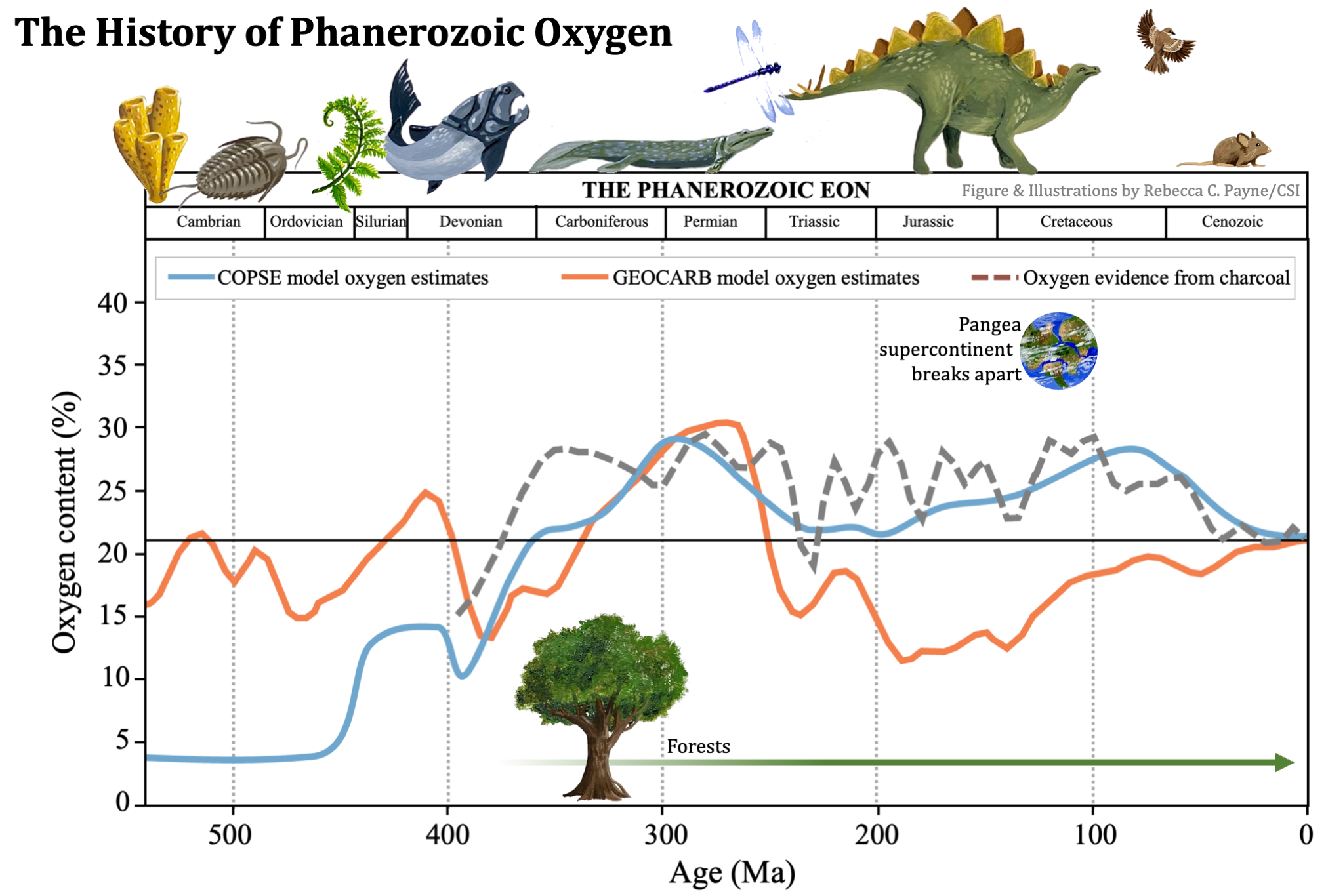In ’65,’ Adam Driver Should Have Known
Would tech-savvy space explorers stranded on ancient Earth really be shocked to find dinosaurs?
 In 2023, a year of movies defined by important science issues like AI and nuclear warfare, the movie “65” bravely asked the question, “What if dinosaurs were aliens?”
In 2023, a year of movies defined by important science issues like AI and nuclear warfare, the movie “65” bravely asked the question, “What if dinosaurs were aliens?”
Let’s say, 65 million years ago, a ship captain from an advanced extraterrestrial society crash-lands on Earth. The “aliens” bent on thwarting his escape would be … dinosaurs! It feels like a play on the premise of “Alien”, except the monstrous creatures these interplanetary explorers find are from our own planet. Adam Driver plays Captain Mills, who is only able to rescue one young passenger, Koa (Ariana Greenblatt), from his ship’s wreckage. Together they brave Cretaceous Earth—while an incoming asteroid looms on the horizon—trying to find a way home.
During the movie, Mills is trying to send a signal out to his home planet, explaining that the ship crash-landed on an unknown world. Helping others locate Earth is essential to his and Koa’s rescue, and in the meantime they have absolutely no information about Earth to help them survive.
The movie suggests that to a group of advanced space explorers, an ancient Earth bursting with life would somehow fly under the radar. But astronomers at Cornell’s Carl Sagan Institute (CSI) say that Earth during the age of the dinosaurs might have been easier to identify as a potential life-bearing planet than modern Earth, thanks to its atmosphere.
Dr. Lisa Kaltenegger and Dr. Rebecca Payne of the CSI conducted a study on how Earth’s high oxygen levels during the time of the dinosaurs could be used as a model to spot other potentially life-bearing planets out in space. This is possible because a telescope equipped with a tool called a spectrograph can break light down into its wavelengths, which can then be plotted on a graph called a transmission spectrum. Different atoms and molecules in a planet’s atmosphere allow different wavelengths of light to pass through, meaning that a transmission spectrum can reveal the makeup of the planet’s atmosphere. And scientists believe that when an atmosphere has high levels of both oxygen and methane, the planet could be capable of supporting complex life.

Models of ancient Earth’s atmosphere suggest that oxygen levels peaked at around 30% some 300 million years ago, when large forests took root, and then rose to similar levels in the Cretaceous period, when dinosaurs roamed the Earth. (For reference, our modern atmosphere is 21% oxygen.) And if the extraterrestrials of “65” had the capacity to zip through the cosmos, they presumably also had astronomy tools like spectrographs—and should have been able to see Earth’s high oxygen levels suggesting life was abundant. So why were the dinosaurs such a surprise to Mills and colleagues from his home planet?
Kaltenegger herself has watched “65,” and seemed to have the same question. “They would have seen the higher oxygen levels [coming from Earth],” she says. “So they should have figured out that there’s probably big predators.”
Also, there’s no way the asteroid would have arrived as slowly as it did in the film. Payne estimates that seeing the asteroid in the sky would have meant Mills and Koa had minutes to react. And, as Peter Brennan points out in his book The Ends Of The World, some dinosaurs might have been thrown into space from the force of the meteor impact on Earth. Sadly, the movie doesn’t show any dinosaurs floating alongside Captain Mills and Koa when they make their last-second escape from Earth.
Although “65” is a creative dinosaur movie that’s refreshingly not part of the “Jurassic World” franchise, its paleontological inspiration is a bit stale. The characters don’t spend much time talking, and even the dinosaurs feel like they’re waiting for the film to end. However, the action parts of the film definitely deliver and, much like dinosaurs, Adam Driver is always worth gazing at in awe.
You can watch “65” on Netflix.
Correction: An earlier version of this article incorrectly stated that dinosaurs roamed the Earth 300 million years ago. It has been updated.
Like this article? Subscribe below to get more stories about science in the movies delivered to your inbox.
Emma Lee Gometz is Science Friday’s Digital Producer of Engagement. She’s a writer and illustrator who loves drawing primates and tending to her coping mechanisms like G-d to the garden of Eden.